Finalists 2015
The 2015 Breakthrough Junior Challenge drew thousands of submissions, many outstanding, from over 80 countries. Here are the 15 videos that made it all the way to be chosen as Finalists from last year. But remember, these are for guidance and general interest only – to win the 2020 Challenge, your film needs to be original! Finalist videos are teaching the world about science and math on the Khan Academy website, too.
*Note: Unlike the 2015 Breakthrough Junior Challenge, the video must be 3:00 minutes in length or shorter to qualify for the 2020 Breakthrough Junior Challenge.
Ryan Chester: 2015 winner
 Ryan Chester, 18, United States
Ryan Chester, 18, United States

The Special Theory of Relativity
Ryan Chester, 18, United States
"Special Relativity has got to rank up there with one of the most revolutionary theories in physics. I've seen it referenced in science books and magazines for years. It was always mentioned in relationship to the idea that you can travel forward in time if you just move fast enough. Time dilation has been in science TV shows and movies like Interstellar so often that I've just accepted it without understanding why it was true. So when this challenge came around I thought this area was a great one to dig into."
2015 Finalist Submissions
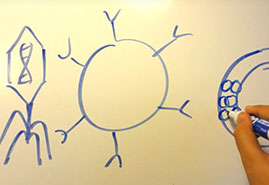 Ritika Bharati, 16, United States
Ritika Bharati, 16, United States
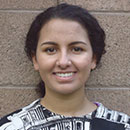
Oncolytic Virotherapy
Ritika Bharati, 16, United States
"Not only is this topic interesting, but additionally, not many people know about it. I think it is important to educate people about revolutions in medicine in a way that they can understand it. A unique topic such as oncolytic virotherapy also paves a path for people to think more about these topics and want to learn more about them."
 James Dingley, 17, Australia
James Dingley, 17, Australia
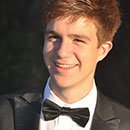
The Science of Fireworks
James Dingley, 17, Australia
"I wanted to show how science is part of our everyday world, and that things as complex and beautiful as fireworks can be understood with science. This is also the global Year of Light and I wanted to contribute to this through a light-based documentary."
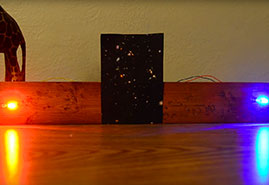 John Fish, 16, Canada
John Fish, 16, Canada

The EPR Paradox
John Fish, 16, Canada
"I chose this topic because, primarily, I'm a huge fan of science fiction and love to see elements of science fiction come to life. I've been passionate about the quantum world since grade 7, and have since been teaching myself the concepts and mathematics behind it. The EPR paradox was of specific interest to me because of the nature of the problem."
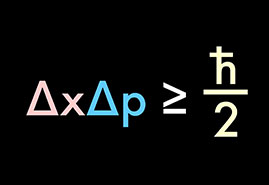 Sean Hackett, 17, United States
Sean Hackett, 17, United States

Virtual Particles and Gravity
Sean Hackett, 17, United States
"Over the Summer of 2014, I dreamed of one day flying to school. I designed and researched many things in order to achieve this goal: A liquid nitrogen powered jetpack, an ornithopter, and even a hot air balloon. During this time, I stumbled upon the concept of "virtual particles", something that is not real that can affect something that is real. It is a truly wacky idea, but I started to notice that it matches with many of the things we know about gravity. It was at this point that I came up with the idea that gravity, like the electromagnetic force, could be mediated by virtual photons."
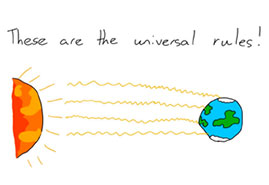 Keeley Hoek, 17, Australia
Keeley Hoek, 17, Australia

What is Light?
Keeley Hoek, 17, Australia
"I chose to explain the nature of light and our current ideas on what light is and why we observe it acting how it does. The nature of light is particularly unintuitive and so I wanted to create a video that illustrates how bizarre light really is and how scientists have sought to describe it (as it has a rich history of scientific exploration). This knowledge opens one’s mind to how strange and wonderful our universe is."
 Jackson Huang, 18, Australia
Jackson Huang, 18, Australia

Phantom Limbs
Jackson Huang, 18, Australia
"Phantom limb syndrome is fantastic to explore from a pedagogical standpoint. Ramachandran's breakthrough discovery combines some of the fundamental pillars in neuroscience: synaptic plasticity, somatotopic organisation, and somatosensation. An exploration of phantom limbs conveniently introduces to a naive audience an expansive survey of the general field of neuroscience."
 Nicholas Morgan, 17, United States
Nicholas Morgan, 17, United States

Orbital Mechanics
Nicholas Morgan, 17, United States
"Orbital Mechanics are complex, but the principles of them are very simple. Students like myself who are interested in space are kind of stuck when trying to learn about orbital mechanics. By learning orbital mechanics one can understand how we (humans) have gotten stuff so far into space."
 Michael Poon, 16, Canada
Michael Poon, 16, Canada
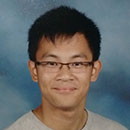
Chromatic Aberration
Michael Poon, 16, Canada
"Instead of simply explaining the concept, I also wanted to reveal the process of me discovering, experimenting, struggling, and finally coming to a better understanding of chromatic aberration. That’s how science works, it’s a process, and I think the best way to teach is by telling your story, because it allows others to relate to you in emotion and intellectual curiosity."
 Maria Portela, 16, Portugal
Maria Portela, 16, Portugal

RNA Interference
Maria Portela, 16, Portugal
"I chose to talk about RNA interference because this concept is very useful, as nowadays it is a common tool for research, being used in a huge variety of studies. Potentially, it can become a revolution in some therapies, such as cancer and other diseases related to protein overexpression, as it silences gene expression."
 Shaun Regenbaum, 16, United States
Shaun Regenbaum, 16, United States

Infinitesimals and Non-Standard Analysis
Shaun Regenbaum, 16, United States
"When using integrals in Calculus your teachers and textbooks either tell you to accept the fact that infinitesimals exist, or accept that they just work.I have never been satisfied with that, I needed to know why they work. That is why I set out to understand what infinitesimals are, how to prove them using Non-standard Analysis, and where else they are useful."
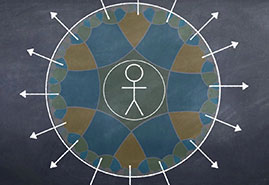 Kadi Runnels, 16, United States
Kadi Runnels, 16, United States
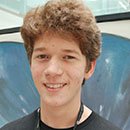
Special Relativity and the Speed of Light
Kadi Runnels, 16, United States
"The main intuition is that the principle of Relativity asserts that the manifold of frames of reference is homogeneous and isotropic, and there are exactly three geometries associated with this: Sphere (which exists as rotations through space), Plane (which represents Galilean Relativity) and the Hyperbolic Plane (which exists as rotations through spacetime). I wanted to find a way to use this intuition without overwhelming the audience with technical terms."
 Jay Shenoy, 16, United States
Jay Shenoy, 16, United States

Quantum Tunneling
Jay Shenoy, 16, United States
"Quantum tunneling has always been of particular fascination to me after I read the book The Physics of Superheroes prior to sophomore year. I wanted to create a resource that would provide the perfect balance of mathematical rigor and intelligible explanation, and I certainly succeeded. In producing this video, I was aiming to create a resource that would help high school students like myself understand a potentially bewildering subject."
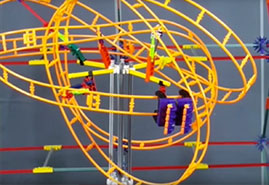 Zachary Stanik, 16, United States
Zachary Stanik, 16, United States

Gene Expression Regulation and Cellular Differentiation
Zachary Stanik, 16, United States
"After consulting with my biology teacher, I became set on talking about how it is that cells differentiate from one another, with a specific focus on gene expression. This concept is a complicated one to understand, it is also one that is undergoing a lot of change, since much modern research is being conducted to unlock more of the mysteries surrounding cellular differentiation."
 Max Thorniley, 14, Australia
Max Thorniley, 14, Australia

Special and General Relativity
Max Thorniley, 14, Australia
"I have a particular interest in physics since the topics and concepts are mind-blowing and difficult to understand, this is one such topic and it is the challenge of comprehending it that made me want to make it the subject of my video."